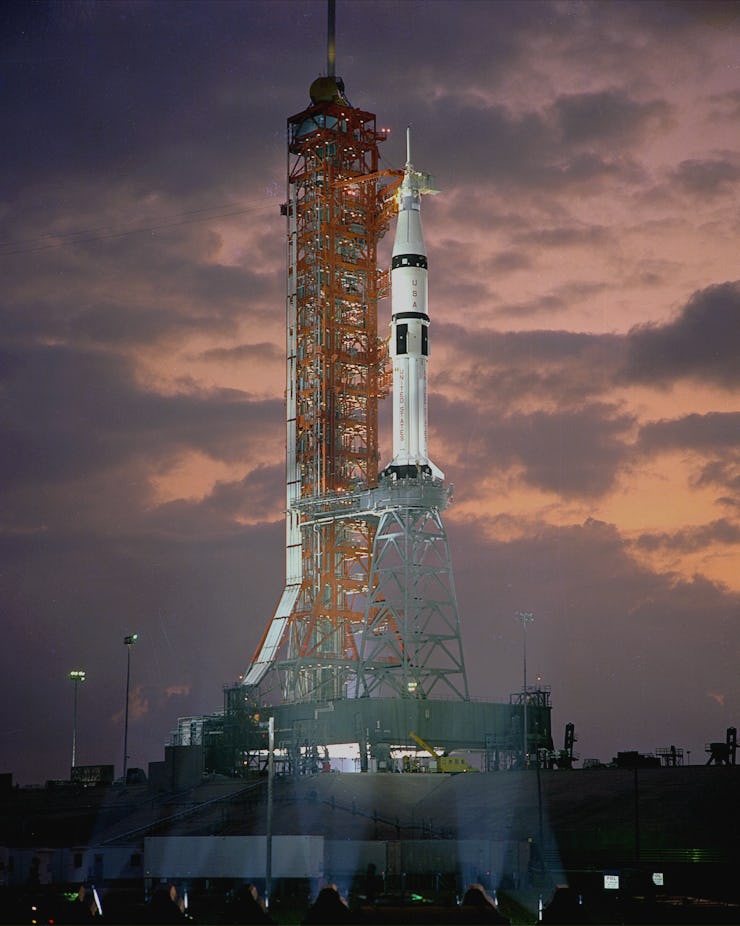The Apollo-Saturn 201 Launched 50 Years Ago Today
The '66 mission was the first to use the history-making rocket, Saturn IB.

After a push from newly inaugurated President Lyndon B. Johnson, NASA launched the Saturn-Apollo Applications Program Office in August 1965. The goals of program were as scientifically rigorous as they were wondrous: Their mission was to achieve long-duration flights, perform space physics experiments, and accomplish advanced lunar exploration. The space race was on and this was what was going to get a man on the moon.
Less than a year later, on February 26, 1966, the U.S. premiered the Apollo-Saturn 201 mission. The purpose of the unmanned suborbital flight was to test the very first Saturn 1B launch vehicle — a powerful rocket capable of launching a fully fueled Lunar Model or a partially fueled Apollo Command Module into low Earth orbit. It set the stage for the creation of Saturn V — the expendable rocket that got man to the moon and launched the first American space station.
The Apollo-Saturn 201 launches from NASA's Marshall Space Flight Center.
Launched from the eastern test range of Cape Canaveral, the Apollo-Saturn 201 mission lasted for 37 minutes and was considered a successful mission. NASA was specifically testing how the Saturn IB would work with the Apollo spacecraft hardware — the subsystems, heat-shield, and mission support facilities.
Designed by Chrysler, the Saturn IB acted as the booster for three more Apollo missions. The success of its first unmanned orbital flight, Apollo-Saturn 203, helped NASA design the S-IVB rocket restart capability — an essential feature that would help boost astronauts from Earth’s orbit into a trajectory towards the Moon.
The launch of AS-203.
However, at the launch of AS-204 in 1967, tragedy struck. While the Saturn IB was declared ready for manned flight, a fire broke out in the command module. It caused the deaths of all three members of the first crewed flight of Apollo — Virgil Grissom, Edward White, and Roger Chaffee. After the incident, the mission’s name changed from AS-204 to Apollo 1.
That was basically the end of the Saturn IB rocket — the disaster halted manned flights for 21 months, while NASA refigured their rocket technology. But achievements have to build from the bottom — and the Saturn IB paved the way to help us make it to the top. The super, super top.